While visiting the shop recently, I learned that one of my young colleagues, recently back from college, would be teaching an even younger group of students how to cast a fly. I’ve always found my friend’s enthusiasm for fishing contagious, his willingness to help others admirable. Since I’d worked with him in prior years on the principles of casting, I thought perhaps the moment was right for a brief refresher.
I grabbed the shop’s indoor practice rod and made several casts—casts where the line rolled out in a wide, sloppy loop, with line tip and leader fluttering down and collapsing in a messy pile. I asked my friend to analyze and solve this problem, so that my ensuing casts would straighten out. (The inability to cast a straight line, on demand, is one of the most common problems in flycasting, afflicting not only beginners but often those with many years of experience. How to cast a straight line is one of the first things we should all be taught.)
After thinking it through, my friend concluded that my casting stroke was too long. He said I was taking the rod too far behind me on the backcast. “What should I do?”, I asked. Boldly, he replied, “Stop your backcast at 12:00 o’clock”. So I did. And my next cast finished with the line tip and leader piling up again, but in a different way. This time they piled up because they were driven into the floor before the cast had time to straighten out. I repeated the cast. Same result—my line drove hard into the floor without straightening out. I looked at my friend. Not expecting this, he seemed unsure exactly how to proceed.
I stopped the exercise. I told him that his analysis was correct—my initial strokes were too long, I was indeed taking the rod too far back on the backcast. But even as he had correctly diagnosed the problem, his proffered solution—”stop the rod at 12:00 o’clock”—condemned my ensuing casts to failure. Now, my stroke was too short—I wasn’t taking the rod far enough back on the backcast.
Here’s how this works. The length of the casting stroke is a function of the length of the line being cast. The relationship works like this: Short line, short stroke. Longer line, longer stroke. So every time we change the length of our line we also change the length of our stroke. Consequently, there can be no fixed backcast position. The correct backcast position varies depending on the distance being cast. Could be 10:00 a.m., high noon, 3:00 p.m., or any time in between. In my case, it turned out the right position was about 1:00 o’clock. That resulted in my line turning over perfectly, straightening out just before settling gently to the floor.
My friend ultimately came to realize that he had offered up a stock answer to a problem with infinitely variable answers. When faced with this same situation myself when teaching, I said that I find it more productive to simply ask my students to not take the rod so far back. By not verbally specifying a particular “time”, but instead watching the line itself and adjusting to its behavior—lengthening or shortening the stroke, as required—students find the correct backcast position simply by feel, ingraining that position in their muscles as well as their mind. Good flycasting instruction requires concise, thoughtful communication. Knowledge alone, while necessary, is never enough.
In time, my friend is going to make an excellent teacher. I respectfully suggested to him that he continue to refine his delivery, learning how to say exactly what he means, and learning to recognize when he isn’t. That’s not easy, but it’s one of the things the best instructors always think about, one of the ways in which they stand apart.









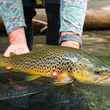

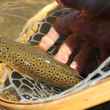

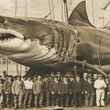
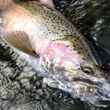

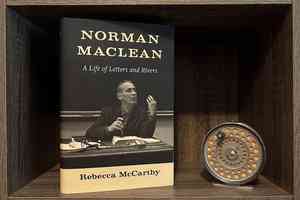

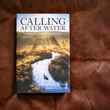

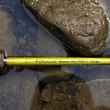
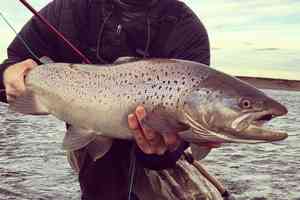



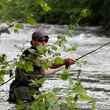


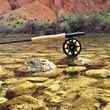
Comments
Jon replied on Permalink
When I taught skiing, one of our instructors skied to the group through a mogul field. He stopped and asked "what did you see?" People chimed in "too far back." And he said, "No, that is a judgement. What was the observation?" The observation was "I'm back. Clearly that worked for me. Do know know why?" Head shaking all around. "Because I can," he said, and skied off.
I learned more about teaching in those moments than in all of the drills I ever did.
Henry Kanemoto replied on Permalink
I break down a casting stroke into a combination of translation and rotation. Translation lengthens the stoke. Rotation also happens during the stroke BUT most of it happens at the end just before the hard rod stop since this is the wrist flick that speeds up the rod tip and gets its out of the way of the trailing fly line and forms the loop.
You also can use the comment of the ski instructor using one student to evaluate another. Obviously, a student when casting CANNOT see himself cast or see his faults. But we instructors can use tell a student to watch a student who has the same casting fault so they can observe what they are doing wrong.
Kyle Schumann replied on Permalink
I think 10 and 2 is a great way to visualize it for beginners. However, past that point it is less a matter of changing your stroke and instead adding more snap/power to it. The more line you have out, the more weight you have to control because the weight is in the line. It takes more force to move the extra weight, not necessarily a different angle. You can add force by "hauling" the line if you are at a high enough casting level to control it
GARY M LOEB replied on Permalink
Why take a longer backcast? With more line out simply wait longer to start the forward casts. Long backcasts cause the fly to be low and create presentation issues.
Mack replied on Permalink
Gary is right. It’s not about the length of the back cast it’s about the delay at the top. More line out, more time at the top (12 or 1 at the most) to load up and get the loop tight. Timing gives you that perfect presentation no matter how much line you have out.
Shaun Reid replied on Permalink
Exactly.
t tanner replied on Permalink
Gary,
You asked: "Why take a longer backcast? With more line out simply wait longer to start the forward casts. Long backcasts cause the fly to be low and create presentation issues."
The reason we follow John's advice and adjust the length of our stroke to the length of the cast is because it works. In fact, it works perfectly. When we stop the rod too early on the backcast, we end up with a casting stroke that's too short for the length of line we're casting -- and we expose ourselves to all sorts of negative results, including tailing loops, poor accuracy and terrible presentations.
John nails it when he writes: "The length of the casting stroke is a function of the length of the line being cast. The relationship works like this: Short line, short stroke. Longer line, longer stroke. So every time we change the length of our line we also change the length of our stroke. Consequently, there can be no fixed backcast position. The correct backcast position varies depending on the distance being cast."
Mark replied on Permalink
"The reason we follow John's advice and adjust the length of our stroke to the length of the cast is because it works. In fact, it works perfectly."
I am a why guy. Why does John's advice work for fly casting? What is it about a longer stroke with a longer line that makes a cast work?
Adroit_angler replied on Permalink
A longer back cast doesn't drop the fly line, dropping the tip of the rod drops the fly line. Remember your line always follows your rod tip. You use a longer casting stroke when you have to pick up and cast more line because you have more line you need to pick up and cast, the second you stop your rod the line is going to form your loop behind you. If you start to form your loop before you've picked up enough of your line to effectively transfer enough energy into that line your cast will not be as good as it could be. Less line out of the rod tip, less amount of energy needed to get it to move less amount you have to move your rod tip, more time out of the rod tip, more energy needed to move the line, more you have to more your rod tip. Also, dont try to cast with your running line out of your rod tip. You can't ask a skinny guy to push a fat guy.... It's all about proper transfer of energy.
Brent Carlson replied on Permalink
I find telling beginners to stop at noon actually has them stopping closer to 2.
Jim Williams replied on Permalink
I heard the great Lefty say it best, though simplified and a bit tongue and cheek. "I don't care what time it is, 10 o'clock, two o'clock, twelve-thirty, 4:15; I still gotta make a cast!
Bolderado replied on Permalink
Yes! I so agree with having beginners stop at 12. Everyone has some angle in their wrist and in order to load the rod, the rod angle can’t go beyond 2,, even if the forearm stops at 12.
Glenn Dotter replied on Permalink
I think Kyle, Mack, & Gary have it pretty much nailed. 10 to 2 has been the standard place to start down through history. Think River runs through it dad McLean used the metronome to stress 10 to 2. Start with that and let the student know about the line length and the need to allow the line to straighten out before bringing the rod forward. That will help the student to understand the concept of power to the amount of line being cast.
Aside from this, the article is really saying there are many variables and ways to teach. Tried and true 10 to 2 has worked for years. It is a great place to start. From there, adjust as you see necessary.
Rick B replied on Permalink
Try the Gary Borger three-point grip; it prevents excessive wrist bending on the back cast and resulting loop problem. A rod grip that works like magic!
Vince replied on Permalink
As this thread of comments reveals, there are almost as many different approaches to casting, or at least teaching casting, as there are anglers. The best instruction is one-to-one, with plenty of modeling of the casting motion, repetitions, and timely, specific feedback. And, to add my two cents, I suppose the best answer is
... length of casting motion
+ length of pause at the top to load the rod
= more effective presentation of the fly.
Rich Lahti replied on Permalink
Pretty good article, this holds true for so many things in life.
One size does not fit all!
Markus Fipps replied on Permalink
Interesting discussion. Certainly whereas one o'clock position either forward or back certainly doesn't fit all neither does it for any individual varying their presentations thru aerialmending. I think it's time to start teaching students to "flex" their rods and start feeling the transfer of stored energy. I find that even amongst fairly good casters they are cheating themselves and working too hard. Wasting money on expensive flyrods they never really utilize the capacities of. TroutBum Trading Co. Markus Fipps
Pages